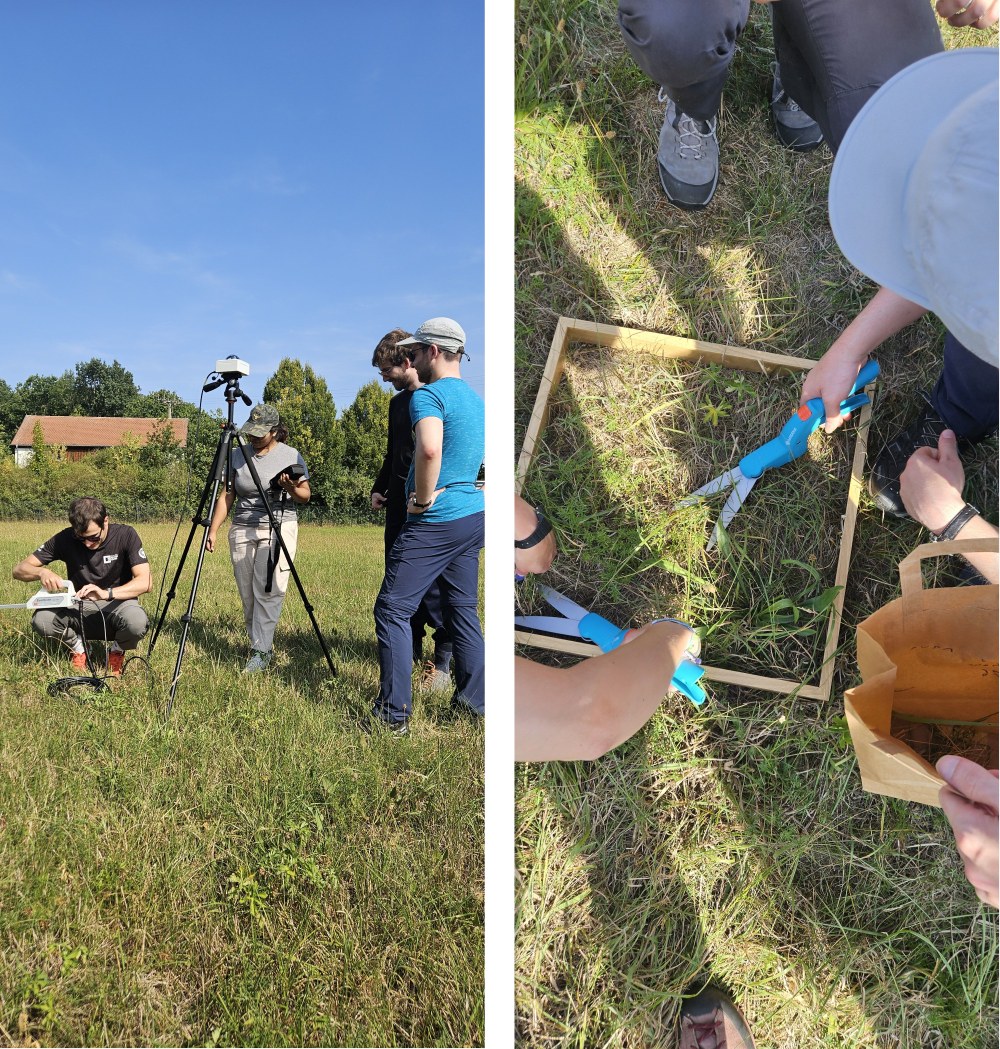Fieldwork for remote sensing: Grassland research in the Bavarian Rhön
Grasslands play a central role in agricultural use and in the cultural landscape in Bavaria. They fulfill a variety of functions. They secure the feed base for livestock farming, contribute to biodiversity, and act as important carbon sinks and regulators in the water cycle. However, these areas are coming under increasing pressure because of climate change. Rising temperatures, changing precipitation patterns, and more frequent extreme weather events are affecting the productivity and ecological functionality of grassland and thus its long-term usability.
At the same time, grassland offers considerable potential for climate adaptation. Resilience to climatic stress factors can be increased through adapted management practices, including diversified species composition and optimized mowing frequency. In addition, extensively used permanent grassland contributes to stabilizing the local microclimate and maintaining soil functions.
Remote sensing data is becoming increasingly important for the assessment and monitoring of these processes. Satellite data enables comprehensive analyses of phenology, productivity, and intensity of use. However, in situ surveys are essential to correctly calibrate and validate this data, and thus also to interpret it.
The combination of remote sensing and in situ data thus creates a reliable basis for the sustainable use and adaptation of grassland systems in Bavaria under the conditions of climate change.
This is where the EO4CAM project comes in, which, among other things, uses modern Earth observation methods to study grassland in Bavaria. In August, the ‘Agriculture’ project team conducted a field campaign in the vicinity of Bad Neustadt a. d. Saale (Rhön-Grabfeld district) in the pilot region in the Bavarian part of the Rhön Biosphere Reserve. The aim was to standardize the collection of grassland parameters such as plant height, above-ground biomass, leaf area index (LAI), and cover.
The fieldwork was carried out by employees of the DFD/DLR and the EORC, with support from students enrolled in the international EAGLE master's program. In addition to collecting data, the students gained practical insights into modern measurement methods and deepened their understanding of the results in the “Field Methods” seminar. The close integration of research and teaching also underscores EO4CAM's contribution to the training of future environmental scientists.
Thanks to cooperation with local stakeholders such as Sarah Flach from Agrokraft GmbH in Bad Neustadt a.d. Saale, several grassland areas could be studied. This collaboration ensured that the campaign ran smoothly and provided valuable insights into regional grassland use.



